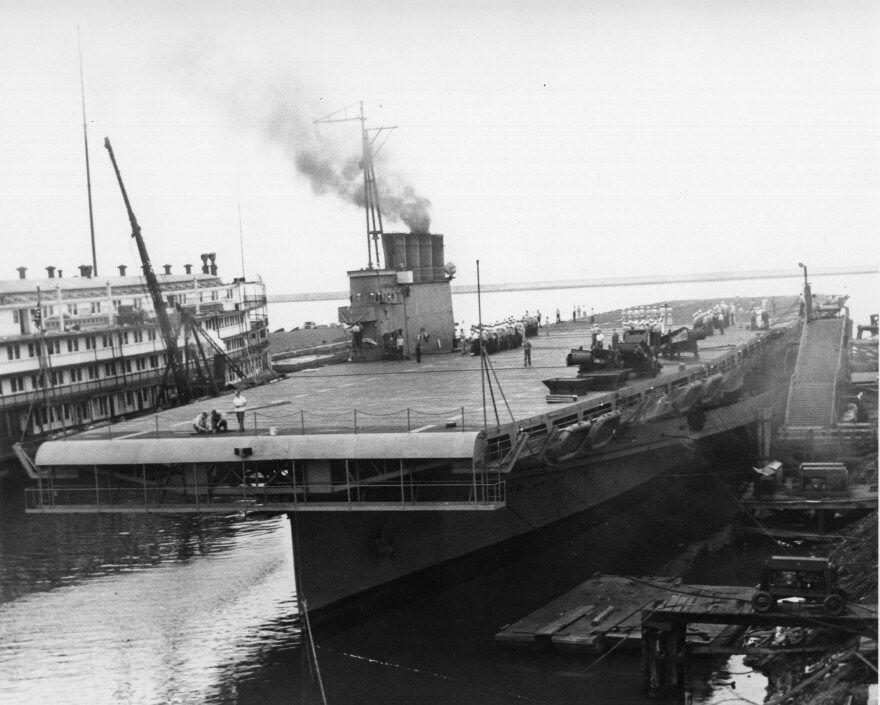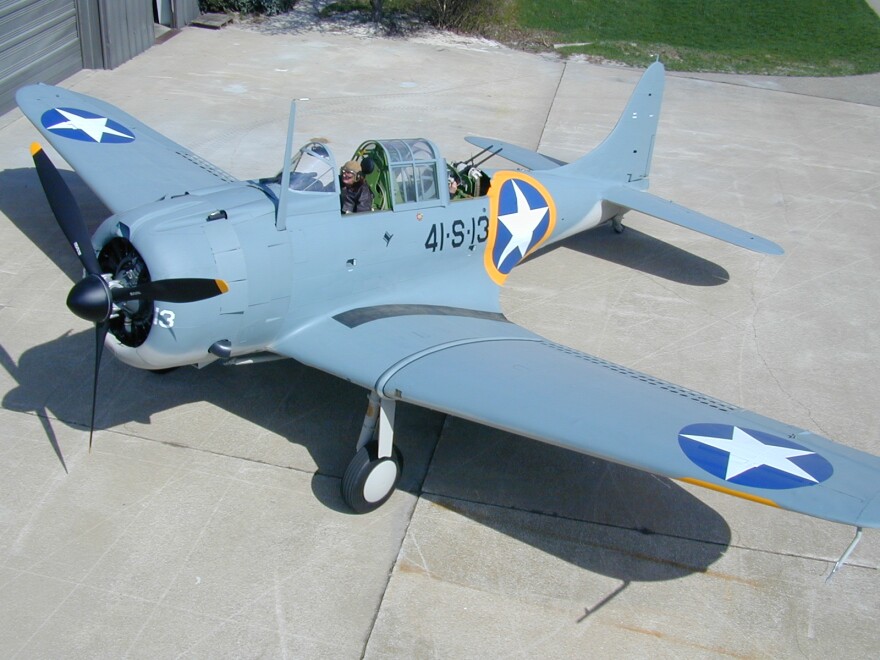There are museums, books, and even songs about shipwrecks on the Great Lakes, but there are also more than 100 airplanes that sank to the bottom of Lake Michigan. They are part of a little known World War II training program for pilots, including former President George H.W. Bush.
Taras Lyssenko is the co-founder of a company that has worked to recover some of those planes. He wrote about that work in a recent article for Michigan History magazine.
The pilot training program started shortly after the attack on Pearl Harbor. Lyssenko said the U.S. Navy chose Lake Michigan because it was a safe place for pilots to practice landing on aircraft carriers.
“We were dealing with, on the East Coast, the German U-boats, and the Japanese actually had really good submarines on the West Coast,” he said. “So if you were a young pilot having to learn to land on an aircraft carrier, well, it was hard enough doing that, let alone if the ship, the aircraft carrier was dodging torpedoes from submarines.”

The Navy purchased two former excursion vessels and converted them to makeshift flattops – the USS Wolverine and the USS Sable. Between 1942 and the end WWII, the Navy qualified roughly 15,000 pilots using these two ships, but about 130 crashed into Lake Michigan.
Starting in the 1980s, Lyssenko’s company, A and T Recovery, began to locate and recover aircraft that were lost during the training operation. Lyssenko and his partner, Allan Olson, used log records to identify the general location of the aircraft. At the time the Navy used radar positions, and the locations weren’t always precise. So they used side scan sonar to map the bottom of the lake and identify the aircraft.
A and T Recovery has recovered about 40 aircraft. Many of them are now display in museums across the country, including at the Kalamazoo Aviation History Museum.

“At the present time, they have a SBD Dauntless we recovered in the 1990s,” he said. “That was a laborious restoration process and they undertook it and their artists and volunteer restorers did a wonderful job. It’s on long term display in their main building.”
The museum is currently restoring a SBD-2P Dauntless dive bomber – a rare photo reconnaissance aircraft – that Lyssenko said saw lots of combat in the Pacific before it was lost in Lake Michigan. Lyseenko encourages visitors to see the restoration process before it heads to the Pearl Harbor Aviation Museum to permanent display.
Listen to the full interview at the top of the page.




